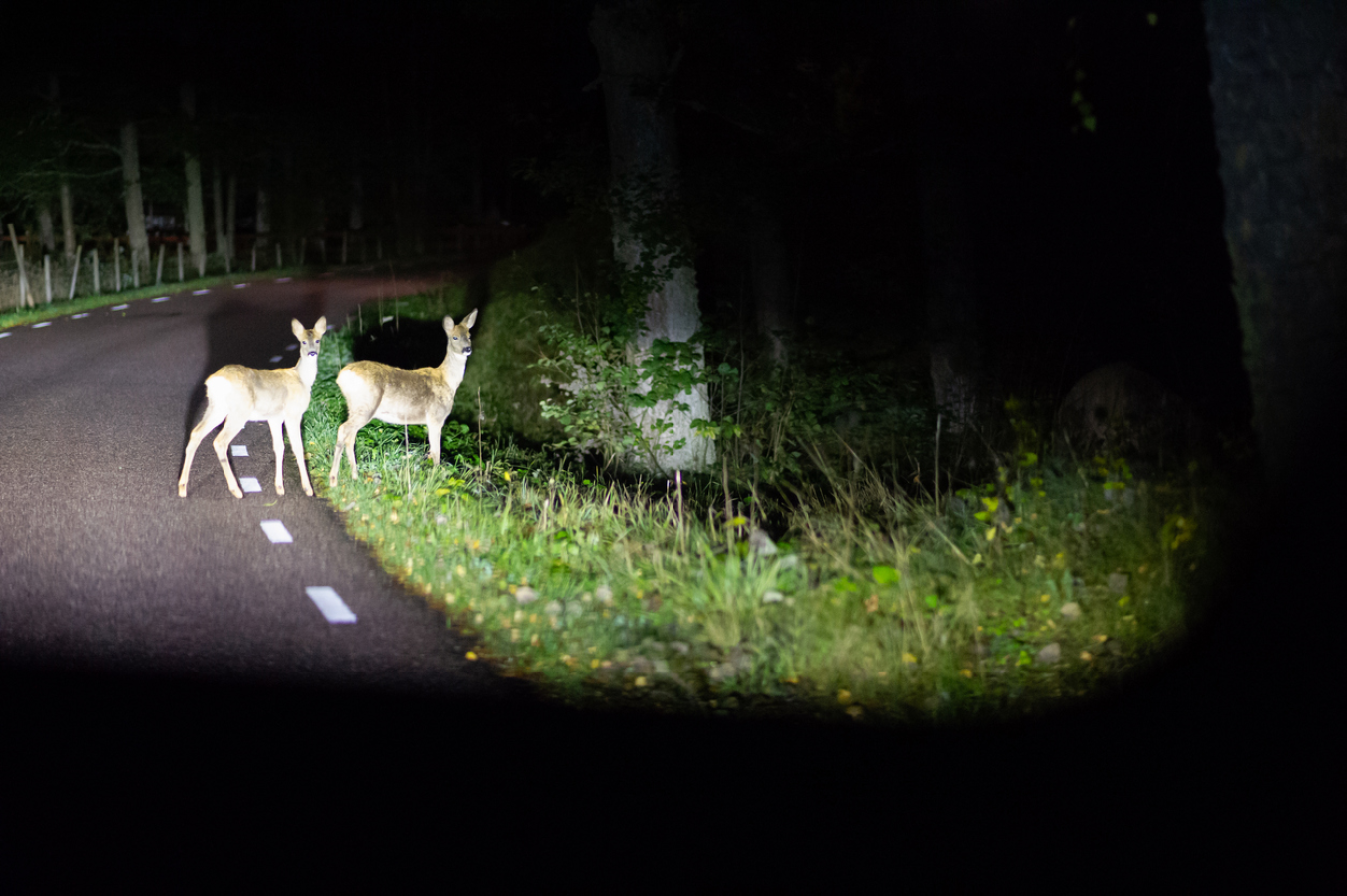A recent study conducted at the Savannah River Site (SRS) by scientists and students from the University of Georgia’s Savannah River Ecology Laboratory (SREL) sheds light on the ability of drivers to observe animals and avoid dangerous wildlife-vehicle collisions at night safely.
Office of Environmental Management
December 5, 2023
A Savannah River Ecology Laboratory study found, on average, that deer were identified at 297 feet from the vehicle when drivers used high-beam headlights compared to 217 feet with low beams. To place this in perspective, the 80-foot difference in detection distance is equivalent to roughly 5 1/3 car lengths.
AIKEN, S.C. — A recent study conducted at the Savannah River Site (SRS) by scientists and students from the University of Georgia’s Savannah River Ecology Laboratory (SREL) sheds light on the ability of drivers to observe animals and avoid dangerous wildlife-vehicle collisions at night safely.
“It’s the first study of its kind to use wild animals instead of decoys,” said Carson Pakula, SREL graduate student and lead author of the study. “This allows for a more realistic evaluation of a driver’s ability to discern wildlife. The implications from this study are significant because it demonstrates the importance of high-beam headlight usage, driving at safe speeds and limiting the amount of time driving at night.”
The study is one example of how SREL and EM regularly work at SRS to tackle issues of regional and national importance.
“This research demonstrates SREL’s leadership in advancing safety and the environment. We are proud of our 70-plus-year partnership with SREL, further exemplifying SRS’s commitment to safety and the community,” said Angelia Holmes, deputy assistant manager for Infrastructure & Environmental Stewardship at SRS.
To ensure consistency, the research team chose a single-vehicle model, gathered 24 volunteers that reflected typical drivers and selected a realistic driving route that replicated conditions that drivers encounter in the Southeast.
The drives were completed after sunset at SRS. The volunteers navigated a 47-mile circuitous route through the site with a truck equipped with an infrared video camera that could identify animals up to a half mile away. The camera provided a continuous live feed and recorded the footage of all wildlife along the road.
Dangerous encounters
Investigators found that approximately 45% of encounters with deer were dangerous. This means the detection distance was less than required to brake safely. This number significantly increased when the drivers’ speeds climbed and they were tired.
“We were surprised by the decrease in detection distances for deer as drives progressed,” said DeVault, associate director of research at SREL and senior author on the study.
Alarmingly, drivers failed 100% of the time to spot wild pigs with enough time to brake safely.
“Drivers generally spotted pigs at such short distances that if they had moved into the road, drivers might not have been able to brake in time to avoid collisions,” said DeVault.
Headlights matter
Headlights played a dramatic role in recognizing wildlife. On average, deer were identified at 297 feet from the vehicle when drivers used high-beam headlights compared to 217 feet with low beams. Similar increases were seen when using high-beam headlights with coyotes, wild pigs and small mammals like raccoons.
How can you stay safe when driving at night?
Based on the findings of this study, one can stay safe by reducing speed, avoiding long drives at night and using high-beam headlights.
-Contributor: Katrina M. Ford
To receive the latest news and updates about the Office of Environment Management, submit your e-mail address.

